|
All photos & text © Copyright 2015-2020, The Diction Aerie. All Rights Reserved. WALKIN' on the WILD SIDE of WASHINGTON STATE: Tales of the Last Virgin Pacific Coastline in the Lower 48. By JOHN HESSBURG Alive with otters, deer and whispering seastacks, rich in salt-spray breezes and the lore of Indian whalers, the Pacific shores of the Olympic Peninsula in Washington state are a quintessential American treasure. From the mouth of the Waatch River south to Ruby Beach where the coastal highway first intrudes -- about 60 trekking miles -- is the longest and most pristine stretch of wilderness shoreline left anywhere in the Lower 48 States. From northern Shi Shi Beach down to South Beach in Kalaloch, this magnificent Pacific sanctuary is protected by the Olympic National Park. Much of the rest is Native American land. None of these beaches ever felt the grim hyena jaws of the developer’s backhoe. It still stirs amazement that these beautiful shores, for two full centuries, escaped the blundering greed of Manifest Destiny that ruined several thousand miles of seaside USA. To see and feel the full scope of this miracle became an obsession for me, soon after a weekend visit to LaPush Washington, a delightful little Quileute Indian village, in July 1979. On 10 follow-up trips to these shores between 1979 and 1997, moving north to south in systematic segments, I was blessed to hike all but a few hundred yards of these 60 sacred miles. As far as they knew, no one before had hiked this coast completely, park rangers and Indian elders told me then. And it was not easy. Some stretches demanded two or three lurching tries just to reach the beach, their seascape wonders guarded by deadly cliffsides, or half-day bushwhacks of leg-snaring salal and devil’s club thickets so brutal that most reasonable trekkers would rather just bag it. Or swoop in by helicopter. Not on foot like some knuckle-dragger with a dream. But there are knuckle-draggers who don’t mind barking their shins, flaying their forearms, swatting at relentless legions of mosquitoes, reveling in sunburn and rainfall with equal glee, when there’s an exquisite payoff to be earned. And amigos del mar, the payoff here is something else: eye candy vistas plus a balm for the soul. Believe me, these 60 miles can be trekked -- every last inch of them -- if you have the will and at least one good buddy. And if you bring rainproof maps plus 100 feet of climbing rope. You simply start up north, keep your right shoulder to the sea, and you march then climb, then bushwhack and march some more until you’re done. Some segments were repeated many times, just for the joy of it, like feathering in brush strokes on a fine paint job. Took 18 years to connect all the segments. And this was the happiest wildland project of a lifetime, impossible to repeat now with all the cares and pressures of running an international business. The healing, laughter and lessons learned from those 10 ocean treks come back to encourage me frequently, even years later. Those treks were energizers, wellsprings of renaissance that helped fuel U.S. Dive Travel Network to full momentum in the early years. Here is why the memories still matter, so many years after that first trip to LaPush… First Beach in the friendly Quileute Indian village of LaPush, on Washington's wilderness coast. These wilderness beaches of Washington state, free of roads and buildings, are as primitive and brimming with wildlife as they were in the 17th Century, when the indigenous Makah and Quileute civilizations reached their zenith -- except that most of the ancient Indian villages are gone now. Whenever I am here, walking on the wild side of Washington, there is a powerful feeling of coming into Indian country. Long before America and ecology were even concepts, Makahs and Quileutes, Hohs and Quinaults, earned their living by brilliant labor on these shores, heeding the holy flow of the water, the roiling of seawinds in the tall cedars. For three thousand years they hunted seals and whales from canoes, gathered cedar baskets full of seafood from the tidal pools, raised their children in expertly built longhouses, and sang their potlatch songs at fireside. "These beaches are the Indians' right and the white man's privilege," an old Quileute woman whispered to me years ago on her front porch in LaPush village. That's why I requested far in advance, and received with a blessing, formal permission from Makah tribal elders before I walked through their sacred lands. The tribal chief who said OK had a day job; he was a Lutheran pastor on that reservation for years. He proudly told me his council of elders banned alcohol sales on the entire reservation -- for all time. A man of normally serious demeanor, the chief let loose a flickery grin as he told me that. I grinned right back at my newfound heart-of-the-sea brother who shared so many vivid stories of his whaling ancestors that interview day. Many Indian legends are alive in these sands and boulders. If you move with a quiet heart, some days you can sense the old souls as you walk along, timing your breath to match your footsteps, like a rolling potlatch chant from centuries ago. • • • • • • • • • • I'm hiking down the Waatch River now, westward outside Neah Bay, and where this unhurried current flares into Makah Bay I veer southward onto Hobuck Beach, a bed of tawny sand about a mile long. The beach is clean, the clouds high and gray, the air incredibly still. I'll be alone for a couple of days, heading for Ozette, nerve center of ancient Makah culture 18 shoreline miles away. Bulbs and tails of kelp are littering the sand. They're fun to pop underfoot; and the healthy feel of my heels rebounding off saturated sand is prompting good memories. All of this list below will be explored with TLC, later on in this seaside memoir. Wildlife encounters on these beaches can be powerful epiphanies, moments of high energy and innocence recaptured. I remember the young sea otters who wrestled like a knot of living mercury, the bald eagle who thought it was a cruise missile, the wide-eyed yearling deer I once mesmerized with a saccharine old Top 40 ballad. And then there was the augury of the raven twins. And, the first close friend I ever lost to death was taken in 1974 in a mysterious accident near Point of the Arches, not far from Shi Shi Beach. They never found his body, only a few confounding clues. Seven years later, I came to Third Beach just south of La Push village for the longest three days of my life, a time of prayer and fasting to release a pent-up poem about the risible selling out of the Sixties Generation. It was called “Firefall.” And it burst out in the nick of time, all seven verses, just before that three-day fast had me hit the wall like a runaway subway car. …You leaned so left when you were young Manifestos on your tongue Poverty was like religion then. Suddenly you're turning thirty Filthy lucre ain't so dirty Now you never say "Remember When." If your friends could see you now Keeping one eye on the Dow Worshipping in all the shopping malls... Hey Miz Suburbia Your brightest future’s calling, yeah You’re livin’ for the day the Fire Falls… Then back in 1987, nearly lost my #1 adventure buddy, Robert “Bonz” Shaw, on a crumbling ledge high up the cliff face at Taylor Point. Our own cliffhanger was almost a dimwit cliché when we look back on it now. But it was real; it was a mule kick in the guts, and it beat Sly Stallone’s Hollywood facsimile all to pieces. When we're not dangling by dental floss above the void, Bonz and I have never laughed harder than on these wilderness beach trips. "Yes, grasshopper," I'd drone in mock Kung Fu solemnity. ( Aping the old TV show. ) "Journey of a thousand miles begins with single tube of squeezy liverwurst." A running joke for 3 decades of hairpin bro adventures across this hemisphere is a little lyric I wrote to prod Bonz’s dubious memory skills. Truer a mountain man or dive buddy there’s never been on this tangled planet. Bonz is the most stand-up friend any guy could ask for. Always. But he also is administratively challenged -- to the Nth degree -- where N is a staggering and lofty integer. Invariably we’ll show up at a trailhead parking lot missing a cook stove, or a tent, or another piece of survival gear so desperately useful that we hang our heads and slap the trunk lid of the car. So now for all time I honor my friend in the first minutes of every hike – I mean every hike no matter where -- with this home-made lyric, “El Planeador” (the Planner), sung in a somber minor key to the tune of a Madrid bullring march… El Planeador His planning motto is “Less is More!” He’s so bright he can open a door With foresight he can walk on a floor El Planeador! To be fair, I have messed up my own share of planning duties, too. One trip we were moving my home and office from Seattle to Minneapolis -- across the Rockies in a 10-wheeler rental truck -- and I forgot to get that rickety rig tuned up for the winter altitude. It took 4 days instead of 2 to cross the Continental Divide – winds slamming into our truck like ocean chop, pickups and semis jackknifed all over the roadway ditches. Yes it took 4 grueling days as this lyric will reveal, sung to the melody of “Yellow Submarine…” Oh our truck’s a highway slug Into headwinds we will lug Charging on at 44, with the pedal to the floor Though we have no earthly cares Grannies are passing us in wheelchairs! We will sing these songs at each other whenever annoyed on any bro adventure. They’ve become our own classics of sibling quibbling. Robert "Bonz" Shaw tugs on a drink after clearing a tough climb up a headland. But I digress. And incessant wavelets, now licking at my boots, pull me away from these reveries… Each time I come to see Old Lady Gray Pacific – where the sun sometimes won’t shine for weeks, but walls of fog and cool mists bring a strange joy anyway – I come to read the wind and water, to learn from the seaside critters, to dance with golden recollections. I always trust there will be at least one poignant omen and there always is. Most have been good, some not. The morning offshore winds are picking up now and high tide is only a couple of hours away. Got to pick up the pace. Burnin’ daylight… The breeze is redolent of that musky meld of seaweed iodine and conifer pitch that will coax a grin from even the sourest city face. I'm starting to remember some of the old hikes, the really good ones. It feels like coming home to your warm and willing woman, who never questions where you’ve been, who always keeps the latch lifted for you, the strong tea ready to brew, the soft jazz ready to play. This beach is home for any weary heart. I shift the heavy pack on my shoulders, breathe in deeply a couple times and begin to walk faster into the new day. • • • • • • • • • • Hobuck Beach, which the ancient Makahs called "Always Changing Place," terminates at Bohobohosh Point, the place where the water is "boiling up." Time to detour. This sector of coastline can kill you at high tide, quick as a hummingbird wink. I clamber up to a gravel road and take it a mile through ranchland, skirting the coast, passing a horse barn guarded by two huge sun-bleached whale skulls, as big as wheelbarrows. Bright yellow and purple flowers are sprouting through their eye sockets. The wheel of life goes round 'n' round. Two whale vertebrae, jazz bongo size, are festooning the farmer’s roadside fence. A horse in need of a serious bath, its eyes rheumy with ancient ennui, shuffles up and sniffs my hand then snorts in disgust. What, no chow? Then ciao dude. He saunters away with his rump half sideways, swaybacked and ludicrous. Ancient whale vertebrae decorate a farmer's fence just south of Hobuck Beach. I cross the little bridge over the Sooes (Tsoo'-yess) River then tramp southward again down Sooes Beach, a mile and a half of remarkable fawn-brown sugar sand. This is the deepest sand beach I've seen anywhere from B.C. Canada to Tierra del Fuego. From low tide to treeline it's 400 yards at the northern end – flat and glistening with a light water sheen -- utter Frisbee Valhalla. So where is Bonz with our battered gypsy Friz when I need him? Shackled to a newsroom desk in Des Moines, Iowa, locus of pork and social propriety for the known universe. Man, Bonz would love this place right now. However, I am flat-out on my own this trip, all week, a time for drifting and remembrance… Linking the southern toe of Sooes Beach to Shi Shi Beach ( pronounced "Shy Shy" ) are two miles of narrow muddy road, covered with a cathedral canopy of trees whose rugged branches stretch vexingly far across the route. This road is so soupy during heavy rains that you could lose a pickup clear up to the doorhandles back there. Not wanting to be slimed into oblivion, for hundreds of yards I Tarzan through the slide alder on the banks of the muck, groaning under my 70 lb pack maybe 3 or 4 feet above the mud, swinging from one thin trunk to the next, laboring up the hill past Anderson Point, which the Makahs call Takwahut, and then past Portage Head. Dropping down the trail to Shi Shi -- Shah-shah-yees or "Smelt Beach" to the old Makahs -- I am leaving the reservation now. At the northernmost finger of Shi Shi Beach there's an eerie driftwood sculpture somebody built just above high water mark. Whether a joke or a shaman's totem, it's impossible to tell, and that's the weird allure of this object. It's a six-foot log split up the middle like a clothespin and jammed vertically into the sand. I try to yank it out but this log is pile-driven into the sand as deeply as a pier support. Perched on top is a shoe-sized chunk of gray driftwood shaped like a prowling shark. Kinda gives me the creeps. I break my walking stick and melodramatically insert it into the sculpture like scarecrow arms, lightening the mood a little, thinking of bogus UFO circles in the English cornfields, wondering what the totem makers will say of this impudent desecration. Well, I’ve never cared much for self-conscious New Age mystics. Let ‘em hang it on their beak, all that murky mumbo-jumbo about energy vortexes and pyramids. I leave the scarecrow parody to be found by somebody -- anybody -- and begin to hike southward. Who’s getting hurt here anyway? Mystery totem with driftwood shark at the crown, on lonely Shi Shi Beach. A little ways down Shi Shi Beach I'm stepping across one square yard of wet sand and suddenly feel a feeble blizzard on one pant leg. It's the Attack of the Furious Sand Fleas, untold legions of them clicking and flipping about in brainless terror. They make the beach surface sound like it is anti-matter raining – rain "falling" from the ground up. Before they're alarmed, you can see a patch of kelp on the sand, seething with these harmless ant-sized insects that scuttle and bump in perpetual motion. Once spooked, however, they rush into frantic overdrive, reminding me of downtown Seattle traffic at noon. Or that manic minefield of a newsroom … A few months earlier I had left my 9-year job as a senior reporter for an a.m. metro daily in Seattle. Most of those years were fascinating, action-filled. I enjoyed my colleagues a lot. But the last two years were corporate hell on wheels. Like pounding nails with your forehead, it feels so damn good when you stop. Exit stage right. “Arriba y adelante!” as my Texas buddies say. Upward and forward to U.S. Dive Travel and spiritual renewal, a life that's free of corporate servitude, free of tabling creativity and joy to clutch another weekly paycheck. And another... Weekly, weakly. Time for a real life now, of risks, rewards and rising from indentured mediocrity. Lord, that I may never become a corporate sand flea again, wearing the requisite tie and munching the requisite corporate kelp, right on cue when the dinner bell rings. Bylines deadlines bang that gong, doo-dah, doo-dah; bylines deadlines all day long… Now the beach is calling its Siren song. …Howdy doo-dah day. The ambient sand of Shi Shi Beach is a medium brown, 2.3 miles of perfect hiking pleasure. Now and again there's a broad swath of ivory white near the treeline, some random veins of coarse black sand and wonderful pockets of dishwater blonde sugar sand, so ultra-fine in grain that once you get some in your pack, you won't be rid of it for years. It’s the gift that keeps on giving. You will find it hundreds of miles away, permeating the innermost secret niches of your camping gear forever. “Remember me?” the sugar sand inquires like that razor-clawed koala bear in the old Zap Comics, who clings to your pant leg and never goes away. “Remember, I’m the one who loves you. You had a great time tromping on my surf ’n’ turf back then. Oh looky here I am in your backpack, now I’m in your sandwich and your cookies, now in your ears and teeth. Later on I’ll even visit your sock drawer in Seattle.” Pick up the pace, man, you’re drifting, burning daylight. Sir yes sir! Shi Shi Beach gently doglegs to the right as you're heading south, and at its terminus you can see the many towering sea stacks of Point of the Arches, jutting three quarters of a mile into the Pacific. These eponymous arches, carved by centuries of unrelenting surf, do not reveal themselves at first. You have to hike along and they gradually unfold, one by one, as you gain the proper visual angles. It’s a terrific thrill to see them slide into being this way. There are three good streams running down to Shi Shi Beach, one with the appetizing name of Petroleum Creek, all of them the color of English breakfast tea. Years ago I learned this coastal creek water is fine as long as you boil it, dose it with iodine or run it through a Katadyne filter. The color comes from bark tannins leaching into the creeks upstream. Won’t kill you, but this creek water tastes like the floor of a New York taxi cab. Taking in the full sweep of magnificent Shi Shi Beach, with one last look back... There are only a few ways into Shi Shi Beach: all of them hard or forbidden. A couple are both. If you approach from the north, you must have Makah permission to traverse the Portage Head road. If you come from the south, you must ford the Ozette River, which only goes at low tide with no storm surge. There are several other secret ways as well. Only the Makahs, some park rangers and a few other people know them. Good Native American men showed me how, and I am eternally grateful for their trust. That’s a treasure to me, still, after all these years. I walk the length of Shi Shi Beach two times, reveling in the solitude and the endless aural massage of the waves. Camp is set at the southern end in an ideal cubbyhole back in the woods, well above high tide line. A site this primo is rare: flat and blanketed with soft pine needles, not a root or rock in sight, tucked behind huge windbreak logs at the sand frontier, covered with a cupola of fragrant pine branches. Hey man, if you camp here, you too can become a fragrant vagrant. Zippety doo-dah, zippety day… There's an old wooden cable spool for a table, washed ashore from Lord knows how far away. I grab a couple runt logs for chairs. You easily could live here half the year in a tent, fishing and foraging for shellfish and berries. There’s food and fresh water everywhere you look. Even edible leeks, watercress, mushrooms way back in the woods. How now townie boy, chow down, live life to the hilt… Fact is, park rangers confirm, some folks did just that during the 1970s and early '80s. Hippie refugees from the '60s, who used to trek to Neah Bay for food stamps and grubstake, some of these squatters actually raised their newborn babies out here. The authorities finally ran them off Shi Shi Beach a few years back and all that's left of their driftwood hamlet is a wooden privy back in the trees. It’s a sad little ruin. I wonder what utterly joyous days those hippies might have spent, so far from the fretting, yapping maw of the city, so far from fast foods, fan magazines and fossil fuel effluent. But what a rootless life. Whatever happened to those poor hippie kids weaned on rain-wracked Pacific beaches – I mean in the bad months? Bet those winter storms were overwhelming for them out here. Nothing this beautiful ever comes without a price. And how I will relearn that lesson in the days to come. I wait a few hours, until I'm certain Shi Shi is deserted. This is fabulous -- not another soul for miles -- and high tide will seal off any visitors for hours at the southern end. Not one more person can get into this place unless they ditch their pack and swim against tidal surge that could bend steel rebar like soda straws. I shuck my shirt, boots and jeans, and strip down to my boxers. Jogging along the line where the silver foam laps at the sand, I careen around Shi Shi for an hour, back and forth, slapping the thin cold water with my feet, exquisitely alone, running like a two-year-old kid on windward Oahu sands, running as if pleasantly demented, sprinting and pretend-sliding into home plate, getting up and doing inelegant cartwheels, then running some more until I'm exhausted. One of my earliest memories is grabbing a tricycle, maybe at age three, and defying my mom’s orders to stay in front of our apartment on Gerard Avenue in Minneapolis. Gravity pulled my machine downhill at breathtaking velocity and I swept around a corner into the forbidden zone -- wow an alien neighborhood -- who the hell are all these big kids? This is better than ice cream, man! Open-mouthed and giddy with speed, confident no earthbound vehicle, no mere adult, ever could overtake my rocket trike, I jumped the curb and plowed into a gutter full of mud and leaves. Mud in the face and on my clothes. Pure freedom, pure unmitigated heaven! And today this run feels just as sweet as the tricycle escape, for all the same reasons. After the run I don a T shirt and jeans to ward off sunburn. Soon the evil skeeters, relentless little bastards, will be out again. Gotta move, gotta go. I'm walking back toward the main creek on Shi Shi Beach and three black-tailed deer, all yearlings, skitter down to the sand’s margin from the underbrush. I stop dead still to spy and they spot me immediately. Soon as I twitch a muscle they're off into the bushes, maybe a hundred yards away. So I shuffle back to camp and begin singing campily -- "Lonely, I'm Mister Loooone-ly..." One doe starts edging back onto the beach. I stand stock still and keep on singing softly, then for some odd reason shift into humming "Clair de Lune" by Debussy. The doe, foot by tentative foot, minces a football field of distance across the entire beach – she takes a good ten minutes stepping oh so slowly, pit pat across, right to within two feet of my outstretched hand. Her legs are tense at the knees, quivering, ready to bolt in a nano-second. The skin of her flanks is twitching. I can smell her perspiration, gamey and half-sweet like the odor of a hamster cage lined with cedar chips. She sniffs at my hand. I lock onto her eyes, big and brown like soul chestnuts, and for a minute I feel a little embarrassed. I’m a smelly human with an outstretched hand, no food in it though, and here’s this beautiful serene lady who doesn’t seem to mind at all, waiting innocently for a treat. For a few seconds it seems quite possible to know the perfect mind of a child again, the joy and amazement that exist before you even have a language to know whether there is a boundary line between your mind and every other living thing around you in this vast world. Aw rats! My quivery deer darts back into the woods, without provocation. What I'll probably never figure out is what did the trick in the first place. What brought her over? Was it Bobby Vinton or Debussy? The three yearling deer who came down from the woods to visit, on magical Shi Shi Beach. The glow of the yearling doe wears off and I begin to think of poor old Cookie again. It was inevitable that this would happen. The time of melancholy arrives without fanfare. And it stays like a jagged beet stain on a white tuxedo shirt. Here at the far south end of Shi Shi, where Point of the Arches juts into the big blue line between sky and water, somewhere nearby my dear old friend Dave "The Cookie" Larson died in the summer of 1974. He was a maestro of vegetarian cuisine for our Department of Natural Resources trail crew. We worked a couple summers together, hand-wracking hard work digging trails in the Cascade Mountains of Western Washington. The mucky-mucks called us a "ConRec Corps" (conservation + recreation) but we dubbed ourselves "The Newts.” That was short for "new recruits" and an homage to the wriggling lizards we'd unearth with our pole-axes and our adze-eye hoes on the many days that the Cascade rains made ankle-sucking mud of the hiking trail. We were a dozen long-haired college kids who gathered in the waning months of the Vietnam War to work for peanuts in the fresh alpine air. We thought it would be fun building trails in remote mountain sites, all for the princely sum of $65 a week plus a clothing allowance – which the state paymasters filched from us each month as if by executive fiat. We came from so many states; Cookie was from Illinois. He was the most painfully shy person I'd ever known. He would fix a splendid supper for the crew, working most of the day on it; then when we clomped back into the barracks after sunset, shedding our mud-caked logging caulks and sweaty overalls in a flurry of coarse language and laughter, hungry enough to eat the kitchen door with a little mayo, Cookie would flee to a back room where he'd bury his face in a book for hours. He seldom said a word to us. But some days he would smile, glancing half sideways, and he would try to talk to me. It was fun listening to Cookie expound, rare and invigorating like a holiday privilege. Once, I remember he had read about macrobiotic diets and religious mystics and then he fasted for 16 entire days, drinking only juice and water, not cheating with a single morsel. Sixteen days and not one blinkin' crumb! He never explained why he endured this incredible suffering. Some of us Newts figured he was trying to purify himself. Or maybe trying to match the Good Lord’s epic 40 days in the desert. I had a hunch Cookie was simply addicted to discovery; he wanted to see what strange new planes of awareness he could explore. He wanted to stretch the fabric of his limitations, punching out the sides entirely. That's why he came to Point of the Arches, I believe. That’s likely why he died here, too. I round the towering point and walk across wet sand to a great rock slab then shuck my pack. The tide is out; I close my eyes to pray for Cookie's peace, wondering what sort of accident he met. He was days overdue from an ocean hike and what the searchers found only deepened the mystery. On a rock shelf well above high water mark they found his orange tent, still flattened without poles, anchored by rocks at all four corners. Sixty feet below that clifftop, sloshing to and fro at the waterline was one hiking boot and a single sock. Nothing more. Just that boot and sock. We assumed he was clambering around the cliffs and fell, maybe splitting his head on a boulder. Maybe the tide carried him away and the sea engulfed him. Maybe swift coastal sharks got him after he was battered senseless at high tide. A couple Newts wondered if Cookie, stoked on some crazed hermitic dream, pulled a splendid Huck Finn and faked his death then sneaked into Canada where he's now in some lonesome cabin by a river, living off the land. That fantasy used to comfort us. But the mystery persists to this very day. Nobody knows what really happened to David “Cookie” Larson. Today I just believe he's dead for sure, long dead and gone. At first, for hours I sense no trace of him on these beaches, and I am so sad it feels like a leather bag full of lumps and rusty metal. It is doubly strange that here today at Point of the Arches, and nearby, I see more signs of death and decay than I've ever seen on any of Washington's Pacific beaches -- a seal carcass, rotting birds, hundreds of Dungeness crab shells littering the sand for half a mile each way. Now, finally it’s clear this indeed was Cookie’s Beach. I even find the flat rock shelf where searchers discovered his tent. The exact spot the searchers told us about. He was here back then, you could feel it plain as day. I decide not to camp there out of respect for a fallen friend. As best the Newts could determine, this was the rocky coastal cliff from which our dear friend David "Cookie" Larson fell to his death and was swallowed forever by the Pacific. The mystery of Cookie's disappearance continues to this day. But the sadness and decay on Shi Shi Beach does not end here. Back in Seattle -- the City the Sun Forgot -- there was so much of it, for so long. A few months earlier, I had left the newspaper business, cold turkey and for keeps, ready to try real writing while building a new adventure travel company that we called “Wild Island Expeditions” our first year. The next year it became “U.S. Dive Travel Network.” Metro daily newspapers had been a safe workaday haven for 15 years. There were fine days when we made a difference; but deadlines and the unrelenting seepage of grimness, bleakness, negativity that passes for news in America is slow death to anyone’s creative flow. To bloody hell with cajoling neighbors' reactions after the first grade girl is crushed under the wheels of a school bus. To bloody hell with waking up the blurry congressman at 11:55 p.m. to cadge a quote on the Libyan dictator’s most recent spasm, just in time for the chaser edition. Surely there are more life-positive uses for the mother tongue than to line canary cages day after self-righteous day, in politics and bleakness -- if ever there was a difference. So it's time to chuck the comfy sinecure and walk the plank. But the line between freedom and angst is pretty thin. Especially when you know you'll be 40 years young in a few years. Time now to build a raging adios pyre for Cookie and for the old way, both of them gone forever. Let’s have at ‘er, man. BONFIRE TIME !! If only Robert Buffington “Bonz” Shaw were here, this’d be a bona fide Bonz-Fire! I dress against the twilight chill and gather a few hundred pounds of driftwood logs and sticks. Mostly decades-bleached cedar and hemlock and oh they burn so beautifully. Then I drag three heavy logs into a triangle and, using a jetsam pallet for kindling, light and stoke the most wanton bonfire of my life. Cargo ships and tankers are plying the coast all night long, you can see their running lights. I'm certain some of them spot this blaze, too, even miles offshore. One ship almost out of sight at the foggy horizon actually strafes my campsite with a weak search beacon. Amazing. That inquiring beacon actually lights up words on my T-shirt for a second! The wind is blowing steadily out to sea, making the sparks spit 30 or 40 feet into the night sky over the water, ensuring zero fire hazard in the rain-sogged woods behind me. The fire burns so fiercely that it melts some nails and an aluminum door handle into quicksilver puddles and then – poof – into metal vapor. They’re gone! I begin to dance and shuffle around the upwind side of the blaze, turning every sad and anxious feeling into alien syllables and spilling them out, ululating nonsense, letting great volumes of tears pour down while the fire dries two lines of the salty flow into chalky streaks on my cheeks. What am I really crying for, my old friend, Cookie? Why am I letting this all roll out here when it would never happen in a hundred years back in Seattle? Is all this for you or for me, for all those tension-soaked years in the newsroom? Let’s just say it’s for you, Cookie Larson. This funeral fire is for you, ol’ boy. You did not need to die this way, alone and cold, broken on the rocks. You did nothing to deserve this. You were always kind, respectful; your word was a bond. I cry profoundly for half an hour, then suddenly I am feeling flushed and clean. Nobody can see me here and that’s a good thing. For hours after dark I stare at the flames as they slowly die away; I’m sifting odd little thoughts that refuse to line up and be labeled. These thoughts are cascading, tumbling around like rowdy sprites and they will not sit still. So I stare down the beach to quell them and another epiphany arrives like a dragonfly lighting on the bow of my eyeglasses. This beach is lovely, so intensely sweet in its ancient solitude, that I'm driven by the desire to have it, I mean really to have it. To be absorbed by it. I want to clutch its fine sand and run it through my fingers, rolling like a daft hound across the cool water sheen at the tideline. I want, no I need to possess all the freedom and vitality of this place, actually to knead it like dough and drape it over my skin, to press my face into its crevices, to inhale the very sub-molecular soul from these sands. But always there is a subtle sullen core, some lack of rest inside when I visit a place this pure, as if I'm not designed to be fully fused with its purpose. I can't hold onto this beauty, can't sit still long enough. There are times on these wild beaches when the peace is so intense I actually close my eyes and try to squeeze it away because I cannot bear to think that in a day I'll have to leave. So few human beings will ever find a powerful peace. On earth that is. So I drown the ineffable in busy-work. Mindless little chores. Fetch and boil the water, carve the cooking stick, stir the coals another time, fidget, jitter, stand up, sit down, let out a glorious ripping belch and grin at the perfect pointlessness of the belch. What a work agenda, what a life -- so empty and so marvelous… The fire burns down to coals, safe inside the triangle. I start to fall asleep, almost pulled away into a partial peace, then there's an unsettling roar at Point of the Arches, now invisible after dark. The ground is even shuddering a little. It sounds like monster-big engines rumbling to life inside a ship's hull, way below waterline. My pulse pounds away and I sit up, confused, then realize it has to be the tide, at just the right level to ram megatons of surf through an archway like the mournful timpani of demons. But they hold no sway over me. The Good Lord rules this place. No damn demon's gonna rock MY world, man. Nosirree... By morning the once great fire is nothing more than a few handfuls of soot. I bury every trace, drag the triangle logs up the beach and hide them in tall seagrass. There's not a single sign that any soul's been here. It feels oddly subversive, like a guilty pleasure, to know that all evidence of that massive bonfire has vanished forever. Then I sit down to breakfast and two fat conniving ravens stalk the camp's perimeter, eyeballing me with discomfitting intensity. Raven. Oh raven. The Quileutes called you Bayak, "The Trickster." These identical twin ravens watch me almost scientifically, cocking their heads sideways – which in raven-speak means “huh, whazzat?” -- marking the precise spot of every morsel that falls from my spool table. I bend as if to grab an attack rock and in a flash the ravens are in flight, veering away in a mocking arc just out of stone range, cawing wickedly at me, streaking southward about 150 feet in the air toward the tallest sea stack at Point of the Arches. I see them settle at the top of a Doug fir tree, ruffle their wings and wait for me to leave. Hours later they are still there waiting. And they haven't moved a centimeter. Neener neener they are thinking. We’ve got all day, all night, white boy. Today there are hundreds of small Dungeness crab shells scattered across the sand. I wonder what orgy of moonlit communion drove these creatures to crawl from the tide pools and die en masse? Carrion eaters have removed the legs and innards and all that remains are the orange shell backs. These little guys used to be alive, used to have companions, used to have a purpose, used to make babies, eat meals, scuttle happily in the moonlight. Good-bye Cookie. Sleep easy, old Newt. The wheel goes round and round. The new morning has come; I feel alive today, alive and ripely juvenile blast it all, so I step on as many of the crab shells as I can, pausing a bit to savor the potato chip crunch every time my boot heel hits one. I even dart out of my way to stomp them. Yes. Oh yesss again. Stomp, crunch, stomp stomp crunch… Can’t help it Cookie. I am Captain Crunch today. No offense old boy… I am alive and you are not, so sad to say. I’m leaving the newspaper world forever, just as abruptly as you left this planet. And why? It’s all pretty hard to understand. Death gives way to new life. So now it’s official -- Crunch Time. Stomp, crunch, stomp, crunch… Cookie, aw man, I know you would have approved. Right? Bonz takes five to capture a Cartier-Bresson "decisive moment" on slide film. All photos on this page were first shot in E6 (Ektachrome), then later digitized. From Will Point for three quarters of a mile south is the "South Overland Trail," reached by grabbing roots and a knotted rope and yanking yourself up a steep, muddy hill to about 400 feet above high tide. Once on top, the trail is carpeted with pine needles, a cruise for ankles already wobbly from rock hopping. Back down on the beach you see beautiful sea spires nearly a mile offshore. Makah Indians called them Duwiqs ish Ikhee, or Father and Son Rocks. For the next three miles of easy rock scrambling and cobbled beaches, south to the Ozette River, you can see Father and Son dominate the coastal waters. At low tide, the rocky pools along this stretch are bristling with life. There are pockets of pink hydroids that look like thousands of dime store deely-bobbers waving in the water, like the antennae John Belushi wore in the “Killer Bees” skits. Sometimes the weeds are fuci, so-called "popball weeds," that burst like plastic packing bubbles. You have to focus and not be tempted to stomp them in glee, lest you take a mighty slide and land on your butt in a tidal pool. Thousands of orange and violet sea stars grip the sides of rocks, and the green anemones are as big as your fist. It's fun to poke a finger into an anemone and watch its tentacles curl quickly into a ball as it dreams the impossible dream of eating you alive in one "swell foop." There are many short sections of beach where you're forced at low tide to clamber up and over slippery van-sized boulders, or prance through a maze of rocks, or climb over driftwood snags, or hop from rock island to rock island. I imagine these endless nuances of navigation to be a living maze. So much time is dedicated to checking the next safe step that you can walk half a mile without looking up once from your boots. Sometimes the best scenery can be right here underfoot. In one short section of tidal flats, just north of Duk Point, there's an amazing number of sunflower sea stars, an uncommon species with 18 to 21 arms instead of the ho-hum five. It's a hoot to watch these otherworldly beings, eyeless yet gliding purposefully without even shifting the relative positions of their arms, as briskly as a meter a minute. They move via countless tiny fingers under each arm. Then soon as you try to grab a sunflower sea star, those fingers lock onto the rock with such incredible force it would take a machete to pry one off. In some tidal pools there are legions of tiny hermit crabs, scuttling about with witless fervor. You have to kneel at poolside to appreciate the comedy. About the size of a dime, these crabs occupy empty shells of turban snails, lugging their condos around on their backs in a tireless hunt for chow. Obsessed with perpetual motion on their little piece of turf, they rear back when a fellow crab approaches then swat away until he retreats. All of this micro-bickering happens in jerky fast motion like a 1930s newsreel. Two Olympic National Park rangers on patrol hike past the author's camp, heading north. Less than a mile past the Ozette River, which has no bridge and can be a screaming bitch to ford during heavy rains, one reaches a large sector called the Ozette Indian Reservation. Here, right at Cape Alava, is one of the most important archeological digs in the U.S., called by some scholars the "North American Pompeii." In January 1970, after wicked storms carved away a few beach cliffs, the Makahs discovered an astonishing doorway to their ancestors. About 500 years ago an Indian village was buried under a mammoth mudslide, freezing all activities at that exact instant in time. Digging started in April 1970 and continued until June 1981, when the Makahs ran out of space to store the more than 50,000 artifacts recovered. There are still hundreds more, safely entombed under tons of blue-gray clay. Scientists from Washington State University ran the dig with tribal permits and found treasures such as a hand-carved cedar facsimile of a whale's dorsal fin, studded with more than 700 inlaid otter teeth. They also found woven cedar bark pouches holding whaling harpoon blades made of mussel shells, yew wood clubs for bashing seals or enemies, rock adzes and chisels, looms and spindles, pendants and even toys for the Indian kiddies. The Makahs were awesome craftsmen. They knew how to spin soft cloth from the pounded inner bark of cedar trees. From this cloth they weaved conical hats and capes -- waterproof as Gore-tex and far more fragrant. The Makahs also were master whale hunters, often spending days on the open sea in dugout canoes, tracking a harpooned whale that battled the buoyancy of sealskin floats tied to the harpoons. The floats kept their speared whale from diving and escaping. Once the whale died, a Makah hunter would leap half-naked into the icy ocean and hand-sew its mouth shut to trap buoyant gases inside the carcass. It’s good to remember that a man can live maybe 20-30 minutes in water that frigid, before the sea sucks all warmth from his head and torso and renders him unconscious. Sometimes the whalers towed a slain whale, several long tons of prized flesh and blubber, as far as 10 miles through rough seas, back to the delighted village in Ozette. The Makahs would prepare for a whale hunt with religious zeal. The crew fasted devoutly for days. Sometimes a month before the hunt, the harpoon man would slip away to a secret pond, where he'd fast and bathe, lashing himself with stinging nettles to impress his so-called spirit helpers. During the entire whale hunt, the wives of harpooners had to lie completely still in bed, faces turned away from the sea, so the whale would be encouraged by spiritual energy not to thrash when speared, and would not pull the killing dugout too far away from shore, where the hunters might meet their own demise. Whales were a cherished food, a cause for village exultation when one came floating back. But the migrating fur seal was the Makahs' prime hunting target. They relished the oil and the tender dark meat. They prized the soft pelts and the musky blubber with its ample calories, to help them through long winters. The closest point that fur seals normally swim to land, on the Pacific Coast from California to Alaska, is Umatilla Reef, about three miles west of Ozette, biologists believe. That was another reason why this cape became the nerve center of ancient Makah culture. I think of the times I've bellyached about no fun foods in the fridge, or about driving a few blocks for a fast-food sandwich, and I feel like the moral equivalent of a Washington banana slug. Man alive, those Makahs worked hard for their suppers. • • • • • • • • • Another year, another sector of Pacific wonders. Good ol' Robert “Bonz” Shaw hikes with me three miles in from Lake Ozette, across cedar plank walkways that span the swampy area called Ahlstrom's Prairie, to Cape Alava. We begin our southward trek together. It's great to have him here again. The inspired idiocy promises to be non-stop. Bonz and I go back to cub reporter days in Red Wing, Minnesota, so far back we still had all our hair and most of our college-boy illusions. He is simply the wittiest human being I know and that is why treks like this are always rich in soul-flushing laughter. We like to free associate, inventing word games, competing for the killer line, writing every shard of conversation down in our journals, every night at the campfire, on every Bonz Trek we’ve ever made. And there have been dozens since about 1977. Our wives think we’re a couple of major loons and they just shake their heads, condescendingly. One night on a voyageur canoe trek in the Quetico Waters of Ontario, after a day of knee-deep swampy 5-mile portages, during a riotous display of Northern Lights, Bonz stood outside his tent and bellowed at the incandescent sky – "Hey guys, look -- this is what rainbows do when the teacher leaves the room!" Boy, it smarts when he's that good. And now this morning is fogbound and drizzly -- standard fare for the Washington coast in late summer. But as usual by early afternoon, prodded by the sun, the fog will roll away like a giant auditorium dividing wall, back to a few miles offshore where it sulks the rest of the day before it gets the last laugh, rolling in again to rule the beach all night. This morning the fog wall hunches about 35 feet above the water, forming an eerie, cleanly defined roof above the beach. Without a millisecond's warning, a large bald eagle, streaking northward at full tilt, flies just a few feet below the cloud canopy, barely 50 feet away. We wheel around and watch for a few seconds until he flaps into the fog again, vanishing as suddenly as he appeared. This is the closest I've ever been to a free-flying baldy in all my life. There are many up and down this coast, but usually they will circle a hundred feet or more in the air above you, wary and watchful. We could see the steel-eyed glare of this one – incredibly close -- and it was electrifying. One of the dozens of splendid campsites that Bob "Bonz" Shaw and the author have discovered in pristine niches of Washington's wilderness Pacific Coast. The riveting-gaze bald eagle streaked right overhead not far from this camp. The brisk morning soon gives way to a hot afternoon. We are carrying monster packs, enough grub for a week between us, so the heat is hammering us hard. We are cranky sore and starved for shade. The 4.3 miles from Cape Alava to Sand Point are mostly long stretches of pebbles, some coarse sand, and then these maddening sections of smooth shoe-sized rocks that tip the ankles every which way but forward. Navigating these sections requires the prudent hiking stance I call a "Dufus Duck Walk" -- knees half bent, toes pointed out, hands held free in the air near beltline for balance, just like you're spoiling for a showdown – with a gunslinger penguin. For the first nine miles south of Cape Alava, finding fresh water is a problem during the dry season. Few creeks are running and you really have to squint to find the little rivulets seeping down rock faces at treeline. We learn to use the tide tables to skirt big rock heads in time to get us where the map shows a possible creek, before we cave in from thirst. It's discouraging to see the dimwit seagulls shedding feathers and relieving themselves unashamedly into the streams on this beach, so we head way back into the trees to fetch clean water. We've been hiking quietly, and the silence is rewarded. At the northern end of the Yellow Banks we see two juvenile sea otters cavorting in a tide pool close to the sand. Actually, the phrase "juvenile otter" is a redundancy. Otters are distilled youth and lunacy. From birth. Their job is to be kids forever, until some cruising shark rips them out of the sea or they just slow down and stop like an old wind-up toy. Otters never die; they just melt into the waves one day. So every time I see them I feel for a moment that there is hope for this sorry planet that God so masterfully knit together, and man so wantonly defiled. Ah but our otters …. These two goofs are oblivious to our presence, less than 30 feet away. They are rough-housing in a living knot of fur and squeaks and unctuous rippling muscle, tumbling so incessantly I start to laugh out loud -- a mistake. In a flash they've vanished, probably streaking just below the water's surface out to a kelp bed, where they can float in peace not fearing the sharks who'd rip them away in an eyeblink. There in the kelp beds, otters love to dive for clams and abalone, then surface to float on their backs in the sunshine. They use small rocks to bash open the succulent shellfish on their chests, then they scoop the morsels into their mouths. These guys are smarter than they look! Smarter than many a newsroom editor for sure. Smarter than me. Just livin' life hour by hour, day by day, doin' what they otter. They wear no throttling neckties. Endure no rush-hour traffic on I-5. Angle for no promotions. Bicker with or backbite about no fellow office drones. Worry about no hot investment tips or lack thereof… Tonight, the sand at our sleeping site is large-grained and smooth, forming a bed that massages your back as you move, just like the beaded car seat covers that cabbies use. It's heaven to lay down and roll away the aches. It's calm and warm tonight. We decide a tent is unnecessary and spread a couple space blankets over the sand, then plop our sleeping bags down. Bonz finds an old driftwood plank, which we lay out like a bedboard. We prop up five or six stubby candles. Once sunset hits there's not a breath of wind, so we light them and there's enough candlepower to write in our journals for hours. We crash under the stars. I always keep my sleeping bag a good 10 feet away from Bonz’s. He snores like an angry bull walrus defending his turf. It’s epic snoring, the kind so bone-rattling and cruel that it must inspire his wife some nights to contemplate, well, you know... It rhymes with “mothering.” I'm hours into a restful half-sleep, full of flickering eyelid cartoons in that just-before REM state called the hynogogic trance, when suddenly we awaken with a jolt. There above is a nearly full moon, so huge and yellow it's startling, like a streetlamp ready to fall on us. The moon is actually casting a shadow on our camp from trees just down the shore. We lay and gape, grateful for the awakening, then half an hour later a massive fog bank rolls on in. We feel the cold mist on our faces and the outside shells of our sleeping bags get clammy, immediately. There is the sense of delicious foreboding. "Hey, Bonz, should we set up the tent?" "Nah. Let's just see what happens." “Yeah, you’re right. This could be some serious thundering rock ’n’ roll. I'm up for it if you are. We can always toss a tarp over that branch if we need to...” “Good thinkin’, Lincoln.” For the record: Robert Buffington Shaw and L. John Hessburg live for wild-as-a-bungee-jumping-ape storms, for big ol’ slap-my-face-and-call-me-Judy storms; the kind of storms when you actually feel the thunderclaps in your chest bones and your pulse gets jacked to 120 bpm just standing there. Big storms are savage and cool. The only storms we've ever dived into better than the lightning-crazy gully washers of Minnesota's Mississippi River Valley are out here on the Washington coast. These beach storms can be stupendous some summers. I'm hoping for serious fireworks tonight, an anarchic light show to blast away all the city dross, but no, no, no …. the cloud cover stays put and we fall asleep again, wearing every layer in our packs but the Gore-tex jackets. Come morning, we lollygag at breakfast; the tide is in and we can't get around the next headland's point until after noon. No big deal. No deadlines around here, only life lines -- the random playful paths we choose over sand and rocks. We break camp, don our packs and head south about 12:30 p.m. The next four miles down to Norwegian Memorial beach are probably the toughest low-tide hiking on the coast. We puff and grunt over vast piles of car-sized boulders, interspersed with a hundred yards or more of slippery shoe-sized rocks, then sections of wet gravel that clutch your ankles, then rock plates slathered with treacherous popball weeds, and back to the jumbo boulders again. Damn, what a grind this is... Zippety doo-dah, zippety day. Feet are so sore, gotta find a new way. Hiker heading northward, as the lads trek south, vanishes into the coastal vastness. We reach Kayostla Beach and take a footpath maybe a hundred feet inland off the sand. There in the weeds we find a stone and concrete obelisk about seven feet tall, in memory of 18 Norsky mariners who died in 1903, when the ship Prince Albert of Norge foundered on a reef. For years hikers have placed wave-polished bits of colored glass at the base of the monument. It’s a weird little ritual of mourning; nobody knows when it started. So we do the same, obediently. I feel numb, detached from most emotions now, kind of a floating reverie, glad to be alive but off in a lazy haze the way Polynesian paralysis strikes you after too many days on a sun-baked atoll. I'm only hungry to see what's around the next point. Hooked on newness, baby. However, spurred by guilt to recognize the old Norwegians, I scoop up a handful of sand and pour it over the obelisk, whispering, "Remember man that thou art dust, and unto dust thou shalt return." The wheel goes round ‘n’ round. We walk a few more miles then set camp at a wide expanse of deserted beach, perfect sand, endless multi-layered tiers of surf to soothe away all thought. Glory be to the Great Spirit and to his incessant surf, the vacuum cleaner of all cares. We sleep under the stars again next to a flaring creek of good water. A square of massive cedar logs, safely above tideline, serves as a fort. We light a hot fire and sit before it, wordless and content. The sun is setting and through the heavy mist it is filtered into a cheerful burning beach ball of tangerine-orange. Then the sun drops cleanly off the edge of the sea, plop, into the void of night. The fire burns itself into nothingness. I sleep. Deeper than the core of life on earth. • • • • • • • • • • Next morning, Bonz and I round Cape Johnson at low tide and continue an unpleasant wobbling scramble for a mile. We are now entering the traditional territory of the Quileute Indian tribe. Most of the morning we are preceded by a piston-legged couple who stay 50 yards ahead of us, no matter how hard we tried to pass them. They are competing, those creeps. Competing for pace, out here, yet! They're the only people we see until late afternoon, but still I'm annoyed to stare at their backs for so long. “They are competing; we are not competing, right Bonz? I mean look at that.” Then the thought crests clearly: What right do we have to resent the presence of any other person here? These shorelines should be open to anyone with a soul. We have no fee-simple title out here, no rights to anything. This truly is God's country. Yet still the resentment burns, like a shadow of original sin. These beaches almost lull you into a sense of isolation so perfect that after a few days you feel that this is your private universe, the place where some adventure mother squatted in the sand and gave you birth. And anybody else outside your stalking tribe is evil competition. For God's sake, this is our beach! Buzz off, you maggots, pleeease leave us in peace! Now I understand, especially when tribal hunting and gathering grounds are in question, the sinking gloom that the Makahs and Quileutes must have felt when white men, or hostile Indians, encroached upon their territory. I feel this primitive instinct to sweep away all invaders. Sick of walking in their wake, we finally pass the couple. The guy flips me a dagger stare, but thank heavens not the wrong half of the peace sign; and we never see them the rest of the trip. “Eat our heel dust, ye infidel beach blighters.” (Thought dart, deeply felt, never spoken.) Oh, by the way, get this … in ancient times, Quileute warriors dealt firmly with trespassers. Sometimes the interlopers were beheaded and their heads impaled on stakes that were planted along the shores. Such displays tended to dampen the enthusiasm of many visiting Indian parties, who opted for quiet retreat, paddling away with a purpose… About a mile south of Cape Johnson, which has no headland trail and only can be rounded if the tide is lower than the four-foot mark, we hit more slippery bouldering, then round a lovely sand point to find a cove and one of the sweetest bivvy sites I've ever seen – anywhere in the world. There's a tangle of mammoth cedar trees lying at the cove's southern end. They are bleached gray, some with root spreads more than two stories tall. The sand is clean and black as ebony. We set camp between two freshwater streams, inside a huge "V" made by two of the cedars, and the V opens out to the sea. One tree has a spectacular root system, which viewed from a southern angle looks like a rococo dragon, complete with fire tongue jetting from a vicious mouth. We hang our food bag off the tongue and christen the camp -- Baroque Dragon Bivouac. We calculate the high-water mark, hope for no storm surge tonight, and put our space blankets down with smooth rock anchors. It is oddly exciting as the sun slides under the gray sea to watch the tide closing in on us for hours, until minutes before dark, when the waves are hissing not three meters from the feet of our bags. We don't budge an inch. It's a matter of principle. The tide begins to pull away. “Hah. Look at that.” “Of course the tide’s receding, right Bonz?” “Yep, that ocean knows who’s boss.” The next morning we pay for our pretend hubris and are awakened sharply. Glory be to Judy it is the gaga voice of the Bates Motel Bird! This unseen avian bozo-demon is emitting the identical, I mean identical marrow-melting sound effect you heard in Hitchcock's "Psycho" movie just as Norman Bates' knife meets the shower curtain. Whoo-EEEH! Whoo-EEEH! Whoo-EEH! Never heard this hideous animal sound before in my life; never heard it since. My adrenal system suddenly jolts into electric poodle mode -- that yipping bug-eyed overdrive of the brain where you imagine jump-cut MTV scenes like Salvador Dali in a rubber chicken suit spasming all over the middle aisle of the House of Lords, bench-pressing a stiff wax figurine of Tiny Tim, over and over, as he warbles in falsetto, "Picture yourself in a boat on a river..." Geez, that bird’s sound is an unholy way to wake up. Never learned which specie it was. Probably Beelzebubbis Raukissimus. We break camp and move along, fully jacked on adrenaline, ready for the new day. The miles south to Rialto Beach are mostly grape-sized gravel and sand, easy breezy cruising. We are making good time, powering down the sand, our packs so much lighter now, our spirits even lighter yet. Rialto Beach had a checkered past, thanks to a greedy hoquat (white guy) who called himself "Alexander the Great." Shortly after the turn of the century, this brawling entrepreneur imported beaucoup whores and booze and built a house of ill repute that corrupted many curious Indian braves. To this day, Quileute elders remember their mothers warning them not to stray too far up the beach into Alexander's turf, just in case his dark amoral ghost should be lurking around. We get around the deep Quillayute River by hitching a ride from Rialto back to the highway and down into La Push. The river's less than 50 yards across and we have to be driven 20 miles to ford it. I'm glad the tribe protects its isolation. If ever they build a bridge here we will be powerfully sad. La Push got its name from an American strangulation of the French words La Bouche, meaning mouth of the river. It's the spiritual and economic center of the Quileutes, a gentle people and one of the west coast's most fascinating tribes. In 1991, the official tribal population was 736 souls. The bedrock families of La Push still carry surnames laid on them by missionaries in the mid-1800s: Penn, Payne, Woodruff, Ward and Williams, to name a few. The prime symbol of the Quileutes is James Island just offshore, a large sea stack they called Aka-lat or "Top of the Hill." It's about 150 feet high; and there once were many comfortable rain-proof huts atop it. The villagers dug a well up there, planted crops, and buried their chiefs in wooden platforms up in the trees, right near the village. When enemies invaded in the 18th Century, the Quileutes would flee their shoreline village, escaping up the one climbable gully gouged into the cliffside, which easily was defended from above by lethal rock and arrow barrages. James Island, what a bivouac with a view! The Quileute Indian's landmark, James Island, just after sunrise on First Beach. Ancient Quileutes feared and venerated an amazing pantheon of spirits, monsters and nether-beings, historians say. The old folks I interviewed confirmed these tales. Foremost among their deities was Kwa'ati, The Transformer, a bald and sexually voracious being who is credited with creating not only the Quileutes, but killer whales, all from primordial wolves. Wolves were the basic stuff of all creation, these Indians believed. Quileute parents invented (out of whole cloth) a couple marvelous monsters that helped keep their kids from straying too close to the river or the deep forest. One was Daskiya, an old woman with kelp for hair who'd sneak up on children, snatch them away and race back up Thunder Road to her lair where she'd eat them alive. Another was Tsika-tso, a terrible creature who lived under the sand bar in the Quillayute River. During the day, if you ever looked him straight in the eye, you died outright. But if you were lucky enough to meet him at night, he sometimes would endow you with magical powers. Some of the real La Push history is better than the Indian legends. For example, when white men first sailed up to Quileute shores, the Indians created a word that translates to "white drifting-house people." Historian J. V. Powell believes there's evidence that in the early 1800s the Japanese Current may have swept some derelict fishing junks all the way from Japan to Washington's coast, where Quileute Indians found pieces of iron, raw material for magical tools. And the Quileutes made cedar dugout canoes that were engineering marvels, even by 21st Century standards. Their ocean-worthy seal-hunting canoes could hold up to three tons of gutted seal carcasses at a time. Whoa. Show me a single Bayliner that could ever do that. Ancient Quileutes also raised special wooly-haired dogs, and they shaved them then wove the fur into soft blankets. Their cedar baskets were woven so tightly they could boil water in them! In one pre-whaling ritual, Quileute men would brave the frigid ocean and swim around James Island dragging a rope with human skulls attached to it while making whale sounds and spitting up water like a whale's spout. Remember, that same Pacific water is cold enough to kill a man, stop his heartbeat in under 30 minutes. The whaling era ended in 1908, when a Quileute brave named Joe Pullen killed the last great one and towed it back to James Island where it was cut up and devoured by the tribe over weeks and months. • • • • • • • • • • Bonz and I stride happily along First Beach, the heart of Quileute lore, a place they called Lawa-wat, the walking beach. It's about half a mile long and runs the length of La Push village. Here, legends say, The Transformer first changed wolves into Quileutes. On First Beach, the pre-contact Indians used to stage contests such as hair-pull wrestling, sliding down tree trunks headfirst, shooting arrows at rolling hoops or rolling beaver-tooth dice. Sounds a little like the Monty Python Bizarro Olympics! On this beach I was consumed by an idea years ago, a thought that wouldn't let me rest until I wrote it down. I came here to fast again for a couple days and was given a lyric about the impossibility of lasting peace in the human sphere, and the endless need to reach for grace. It was kind of a wild worship tune but heaven knows no mainline church would touch it with a 10-foot whaling harpoon. It would be many years before I finished this song, but the first beach-born stanza went like this… Sky high I need to fly into your pale embrace Deeper than life you are the womb Sky high So faraway in perfect emptiness Say, do you really have the room For a traveler such as me Who's resting on destiny And living it up for a song about laughing at gloom Love teacher, how I bless you I reach but can't caress you You're so Inaccessible Blue... The Native Americans' sacred James Island once more, just before sunset on First Beach. From the south end of First Beach you scoot back up to the road and hike half a mile to the trailhead for Second Beach. The trail is 0.8 miles in, and the reward is splendid: nearly two miles of light-brown sand, hemmed in on either end by dramatic caves and pillars. We discover that the haute art of beach hiking is to find the perfect path to walk so your heels don't slam too hard on the wave-packed wet sand, or sink too far into the soft sand. Either extreme will wear you down. It's a fun game veering back and forth in the silent plodding hours, to find that precise point between water and dry sand where you can hike with the most efficient spring, so the sand rolls you forward instead of grabbing your feet until your Achilles tendons ache. Down Second Beach we plod, chatting like wired teenage chipmunks, glad all over and bouncing along. As we scan the lumps of driftwood and the seastacks offshore, we "see," then actually convince the other guy he's seen, a yawning hippo, a supplicant squirrel, a bored duck, a dolphin with a blender on its head and an owl-faced guru. We reach the southern terminus of Second Beach and chug our water bottles dry in a hurry. The sun is out now, the afternoon ideal. I dump the pack and go for a long run. When I return, puffing and beaming, I announce, "Feel so young! This is amazing. Feel like I'm in the best shape of my life." And the day only gets better after that. We hang out on Second Beach, bask in the sun, and feel the sweet sea drain our tensions away. Time for word shenanigans again. Bonz’s father was executive director of the Minnesota Newspaper Association for decades. Bonz himself was lead editor on a Pulitzer Prize winning series at the respected Des Moines Register. Back in the cub years we worked together on a small-town Minnesota daily for 5 years once -- the Red Wing Eagle -- won a bunch of regional awards for investigative reporting and there cemented a lifelong friendship, often fueled by weird-ass word games. Yep, we like to mess with words like otters mess with kelp. Not ashamed of it either. So here on Second Beach we devise an especially annoying word game called "Verblots" -- short for Verbal Rorschach Blots. The original blots, you'll recall, were random ink stains on folded paper that old-timey shrinks used to give their patients to free associate with. "So you say zis inkblot looks like a ruptured duck on your mother’s ironing board? Hhhmmm … Vell lay back on zee couch; please tell me more..." The gist of a Verblot is that it must be a manic random phrase comprising three nouns, each of which sounds weird alone. But when they're run together, the trio must provoke great mirth even in imbeciles. I create the inaugural Verblot -- "dulcimer crotch rivet" -- and the race is on. Soon we have certifiable gems, certain to grace the ages. There's "halogen goose urn" and "filibuster pork retardant," then the enduring classic "polyester smelt orchestra." Zippety doo, I haven't had this much fun since my li'l sister got et’ by the hawgs. Any wrinkling little atom of stress has now been blown to bits where it belongs, and the coastal trek is ready to move into warp drive. Having solved most of the hemisphere's moral dilemmas by lunchtime, we look up and realize we're burnin' daylight. There's an ugly bushwhack coming and it's time to get at it. One of the toughest segments of the coastal trek is the clawing push, about 0.7 miles, over Teahwhit Head from Second Beach to Third Beach. There's no overland trail to skirt this death trip of a rock point, and there's no way to round the head even at extreme low tide, so it's up and over the jagged cliff, then through some of the worst salal, blackberry, devil's club and scrub brush thickets I've ever been cursed to meet. We find a relatively safe gully in the cliff face to scale but once we're in the treeline the thrashing starts. About an hour later we descend an easy tree-lined slope to Third Beach, our forearms flecked with deep red scrapes. Looks like we’ve both been taking tango lessons from sociopathic polar bears. I'm quiet for a while now, hiking the clean sands of Third Beach south, and Bonz senses something is on simmer, so he gives me space. Doesn't even say he's doing so. We're such good friends he knows that I know what he's doing, and that's good enough. I always do the same for Bonz too. This space-giving most often occurs during journal time at the evening campfire. I wish nearly every woman I have ever known, or loved, could be like this at least once or twice a week -- just sitting there near you for hours, saying nothing. Just being there and reading or writing quietly, maybe looking up every 30 or 40 minutes for a quick grin and then going back into the Tranquil Zone. Just keeping you pure and excellent company. Without talking. Thar be giants on them thar WA beaches... and remember the Ten Essentials for trekking Washington's Wilderness Coastline - tent, food, waterproof matches and map, rope, polypro layers, rain gear, rain gear and ... rain gear! We hit Taylor Point, arguably the most dangerous spot on the Washington coastal trek. More fatal accidents and park service rescues have happened here than any other beach site. And it's here we make a critical decision. Taylor Point cannot be rounded on the beach even at extreme low tide. Some unwary hikers are lured into thinking they can make it, and partway around the point, safely up on rock shelves, they reach an impasse just when the tide rushes back and cuts off all retreat. Whoosh, you lose the big one, baby. In many spots the cliff is impossible to climb because the rock is too friable, even for experts. So, instead of taking a perfectly fine headland trail off the south end of Third Beach, which you reach via ladders up the cliff, we elect to climb the central rib of the rocky point with only 80 feet of 7 mm rope and no rock climbing shoes, no chocks or slings for crack protection, no carabiners, no common sense whatsoever. The climb looks easy from below, and starts with some ho-hum hand-over-hands up to about 100 feet. Lured by the benign first pitch, I strap the coiled rope to my pack and quickly climb the limestone face, smiling like a Cheshire Cat at the ease of the cruise. Then pesky reality intrudes and I hit a patch of steep dirt over loose shale and I'm forced to crab delicately up and over a vexing section invisible from the beach. The handholds are scant, the exposure tremendous and I begin to see, too late for retreat, that this wasn't the brightest idea after all. I reach a cluster of bushes and grab for a hold but the whole knob pulls out of the rock and tumbles 150 feet to the deck. Whoa baby... with cotton mouth and quick shallow breaths I flatten against the cliff face, nose and chest pressed tightly to the rock, my toes locked onto a crumbling ledge the size of a doorjamb. By this time Bonz is about 90 feet up the face and he gets off route, hits a dead end and soon he's howling that he can't go up or down; and what the hell have you gotten me into? A flurry of adrenal visions follows -- his wife and family hating me forever after he peels from the cliff, my own lifelong depression over leading him to a stupid death -- and some crazed energy beam propels me above my half-imaginary foothold where I lunge into a flat area, clutching the grass on my stomach. I'm up! “I made it Bonzo, I’m gonna help you now. Just hang tight bro!” Bonz yells desperately for a rope, so I set a quick anchor on solid tree trunks, tie myself in and weighting the rope end with a stick toss it once, then again and again, finally reaching Bonz who has to grab it over his head, nearly tipping over backwards. My forehead is sweating so heavily the salt stings my eyes shut. “C’mon man, you can do this, Bonz!” He ties in with a bowline on a coil and I belay him up, pulling with desperate intensity until the insides of my knuckles are bleeding. Finally he’s up -- yes! But Bonz is so shaken, so ashamed of the fuss on the cliff, that he hardly speaks for two glowering hours. "I suppose you think I'm a wheez now, huh?" "No way, Bonz. I was there, remember? I know what it felt like." "You know what it felt like!" Bonz's cheeks are pinched and chalky white. His eyes have a fixed feral glow like some buck staring into a semi’s high beams. He has to lick his dry lips repeatedly to stir up enough spit to talk. So do I. "Promise you won't tell anybody?....." "Promise. Look bro, remember Louie Armstrong? He once said, 'I never criticize a man's music.' Jazz is like life. So who am I to criticize a man's climbing? My threshold of death is pretty low, too." I try to apologize, since it was my hairball idea to sidestep the trail, to save time by cranking that cliff climb. "No blame, no progress," Bonz allows. “For sure,” I reply. “Without blame there can be no tomorrows.” “What would America be without vast viaducts of hot-running blame?” Bonz asks. “Blimey the blame…” The friendly repartee’ begins again, cautiously, like a stiff old dog standing up from sleep. We descend, laughing nervously, to Scott's Creek Beach. I spot a gnarled root that, viewed from the south looks exactly like a duck-billed sphinx in arrogant repose. Bonz hates it when I get a good one and he's empty-handed as the curator of a Bangladesh art gallery, so he walks around that root clump and, aspiring alpha male that he’s been for years, declares that from the north in fact the root looks quite like a wolf jaw. We each check the other guy's angle and find – hey he's right! A duck-billed sphinx and a wolf jaw for crying out loud! "Can you believe this, Bonz, from the Death Cliff to the Sphinx Duck? What a day for a daydream." "Yeah," he says, "I sphinx therefore I am." "The postman only sphinx twice." The jabs and parries last another five or six minutes, degenerating as they always do into the linguistic equivalent of lemur drool, once all syllabic permutations are exhausted. Then there’s blessed silence once again… We climb a short ways up an easy trail, take it half a mile over the headlands and descend again to a beautiful flat-sand beach with a cluster of sea stacks just across the open water. The map calls them Giant's Graveyard. So what. The map makers are all dead it seems. But WE are not. Oh Lordy Halleluia! Robert Buffington "Bonzo" Shaw, after a survival epic on the Taylor Point cliffside, poses with campsite mascot, "Kabool, thee Meestic Ruler of thee Beach" who helped lighten the ol' mood after two buddies' closest brush with Losin' the Big One in years. For the record, the boys created a 1-eyed smile critter 10 years before Monster's Inc. After we set up camp behind a titan log above high tide, I find a smooth oval rock with a perfectly round hole right through the middle, then nearby a translucent crystal pebble that fits snugly into that hole. With a rock I scrape a smile shape under the crystal, wedge the whole thing into the top of a driftwood log about five feet high and we pretend it’s the camp mascot. Mocking the crystal gibberish of New Age gurus, we call it "Thee Creestal Eye of Kabool, Meestic Ruler of Thee Beach" in a fake Turkish accent. Bonz finds another rock that looks like it has two potato eyes. He scrapes a maniac smile under the eyes and wedges the new rock star next to Kabool. "Kaleestoga, Deputy Ruler of Thee Beach." "Jawohl, we salute zee Beach Meisters." “Hey, that was German not Turkish, you knucklehead.” “So sue me, Bonz. I felt like switching horses in mid gag.” “That’s so Hessian, switching nags in mid gag.” “Go gag on a rag, man.” “Okay, enough already -- please – truce?” “Sho ‘nuff, Bonzo Boy. Truce then.” We hit our bivvy sacks all smiles, calm in our knowledge that Kabool and Kaleestoga are mighty patrolling angels, shielding us from the savage double-jointed beach weasels we believe may prowl this region after sunset. The night is nearly windless, so we light a couple camp candles and set them under Kabool and get to work in our journals. Not a word is spoken for two hours. Then a sudden burst of breeze blows wax off one candle, forming filigrees that dry straight into the air like fans of white coral. It's beautiful and pointless, both symbol and referent, the thing symbolizing it’s own sweet self; free-floating horizontal moon lace, just like the peace that envelopes us in this place. Sleep rushes in and takes command so easily here. • • • • • • • • • • It's ideal sand hiking most of the following day, about three miles of relaxing fluff around Strawberry and Toleak points. These are some of the loveliest beaches I've ever seen and we stop for a couple hours to lounge, take photos, and watch the inane puttering of seagulls. Who needs a job, a car, when you have a beach like this? Do we really have to go home in a day or two? Our thoughts become wild and juvenile, utterly impractical. The sheer health of this place is heady. The next challenge is a 1.5-mile highland trail that skirts a dangerous rock point. Falls Creek, then Goodman Creek cross the trail up top and at one point we have to scramble over logs spanning a small waterfall. It's clear that during the rainy season these creeks would be well nigh impossible to ford. I'd guess that until the snow-melt settles down they're savage little rippers, too. We trek an easy two miles of sand and boring pebbles south to Mosquito Creek, another water hellion during heavy rains. Since it's been dry for a week, the wading is duck soup today and we climb to the longest headland trail of the trek -- 3.5 miles -- to skirt Hoh Head. This dramatic rock prow juts a third of a mile into the Pacific and stands a couple hundred feet high. The trail runs from Mosquito Creek south to Jefferson Cove. It is dry and a cruise today, but after a few days of rain, there are serious sinkholes along the route that would be dangerous to slip into if you had a youngster in tow. We hit the tide dead wrong coming off the highland trail and are forced to wait for interminable hours at Jefferson Cove, which thanks to its scruffy hillside brush and gray rock beach is one of the most rump-ugly sites on the entire Washington wilderness coast. Man this place is awful! And here we are, feeling like high school kids stuck with detention after class lets out. The tide finally ebbs and the coast is clear, literally, so we hoist our packs and start running around that progress-stifling, homelier-than-a-gas-station-privy Jefferson Cove Point. Get thee behind me Satan! Bonzo bellows like a stockyard supervisor after 3 cups of joltin' joe, “Let’s blow this pop stand, man!” “Yeah, turn me loose; gotta vamoose.” Trying to sprint under flopping heavy backpacks, shod in clodhopper trail boots with muddy lug soles, we look like two mad donkeys swaying side-to-side under saddlebags of iron ore. As the adventure winds down, another perfect campsite... There are 2.6 more miles to the Oil City Road at the Hoh River mouth, our final goal. We're way ahead of schedule and we don't want the trip to end yet, so we pick a superb bivvy site a mile down the beach. It's a flat area, 40 feet square of dry pea gravel enclosed like a box by four driftwood logs, each at least four feet in diameter. Now we have an ideal windbreak. The inside face of one log has two loaf-sized holes dug into the bark, and they become grottoes for our candles. The whole site is about 120 feet from the high tide line and well above storm surge. This is way important, since hikers have died on these beaches when the logs they were resting against, normally multi-ton giants embedded into the beach, suddenly floated free with the incoming tide and rolled, crushing people neatly as insects on the floor of the New York Stock Exchange. The candles flicker as we work in our journals for hours, trying to savor every shard of the final day. We pause every 20 minutes or so, hoist a half pint of lemonade we've saved for the last night and drink another wordless toast. Oh we’re really livin’ on the edge now. Lemonade and there’s squashed Fig Newtons, too. The surf is sibilant in the background. What more could anybody ask for? We are grinning stupidly, in sheer mammal delight at the untamed unshaven smelly old polypro joy of it all. Life! This is pure life in an impure world. Thank you Lord o' Mercy for the gift of life on these wilderness beaches. Back for a sec' to that pesky reality... Our women would take a firehose to us and hang us out on the back clothesline to dry, if they were here. Oh, but they’re not here! That is precisely the point… Tomorrow morning we'll be out and heading back to the world of cares and cars, and we work to stuff that ugly thought back into a deep conceptual hole. But hey, it's still tonight; there's more Fig Newtons and the candles haven't burned down yet. I reach for another mangled cookie and get a new epiphany instead. In a wink, a lone sand flea leaps from the darkness and lands smack dab in the middle of the hot wax puddle atop one candle. One split second of sputtering and there his body lies, once gray but now bright coral pink like some boiled micro-prawn, antenna quivering in the candle's convection. It’s amazing to watch Bonz marvel at this moment of hot pink death. Confident that it is morally permissible to desecrate the memory of a flea, we start laughing; no we are braying crazily like high plains Mexican donkeys who sneaked into the master’s pulque (cactus liquor) after hours. Somehow we know this is the last of the beach epiphanies. Th-th-th-that's all folks, we realize, no crashing moral revelations, no dramatic insights into the noumenal world behind this ocean wilderness. Nothing but clean air and some good laughs and, yes, a fresher sense of balance once again. Bonz with candles, at Camp of the Deep-Fried Flea, near journey's end. "Yogi Berra once said 'It ain't over 'til the fat lady sings.' Well Bonzo, tell me amigo del mar -- I don't hear any singin' yet -- do you?" Now we won't soon forget the tenacity of the ravens nor the careless creativity of otters at play. What utter joy to remember the pure-souled trust of the yearling deer and the jetstream sense of purpose in that bald eagle’s eye. Just living here for a few days confers an attitude of hope and new life on the city-stale human spirit. We can go back to Seattle, back to Des Moines, Iowa, and all will be reasonably well, just knowing these beaches are here whenever we need them. "Hey Bonz, this is the way the adventure ends, not with a bang but a deep-fried flea." "Yeah my best friend from Seattle, the idiot savant.” Then sleep closes in again on that pristine beach and the next thing we know it’s sunrise. High tide, nudged by gentle breezes, is lapping away only a couple feet from the toes of our sleeping bags. But the bags are still dry -- hurrah! “Hey look,” I mumble under my sleeping bag, “that ocean still knows who’s boss.” “Uh huh,” Bonz says. “Now get the stove started, OK? Your turn to make the oatmeal. There’s some raisins in the top pouch of my pack. Can you toss me the water bottle?” “Roger on the oatmeal, Bonz. But negatory on that water bottle. Remember dillweed, you stashed it with keen El Planeador intelligence right next to the latrine shovel last night. So get your own water. Real men respect germs.” “You’re the germ, you worm!” “Oh yeah, as the worm turns, El Bonzo squirms…” It was inevitable. We can actually feel it now. We’re fighting off gloom, true blue gloom, slapping back at it like middle schoolers waving off wasps at a bus stop on the first morning after Labor Day, pressing hard against the closing-in of civilization again, grasping for any excuse to laugh. The best of this trip will be over in a few hours. Can’t believe it’s happening already. Yet sure as Seattle rain, mere months from now we’ll be planning another bro trek… It’s the law, you see. And the phone will ring. “So Bonz, whattya think about heading over to the Stuart Range next summer? We’ve been talking about that South Face Couloir for a long time now. OK, you know how every autumn Lucy holds that football for Charlie Brown to run up and kick? “I promise this time for sure, really Bonz I promise, I won’t sing the El Planeador song, not this time…” While the boys head out in search of the next campsite, Praying Mantis Rapto-Saur guards their backpacks...
© Copyright 2015 - 2020, John Hessburg. All Text & Photos, All Rights Reserved.
2 Comments
|
FRICTION-
|
All text & photo content of this website is
© Copyright 2015-2024, John Hessburg
& The DICTION AERIE.™ All rights reserved.
All short stories, essays, plays, poems, lyrics,
anecdotes, humor pieces, texts & blog titles
are copyrighted by the by-lined authors.
All website text titles & button headlines are
trademarked by The DICTION AERIE ™ --
owned by John Hessburg & USDT Network.
Note: no reprints of any kind are permitted --
per federal copyright law -- except by the
expressed written consent of by-lined authors.
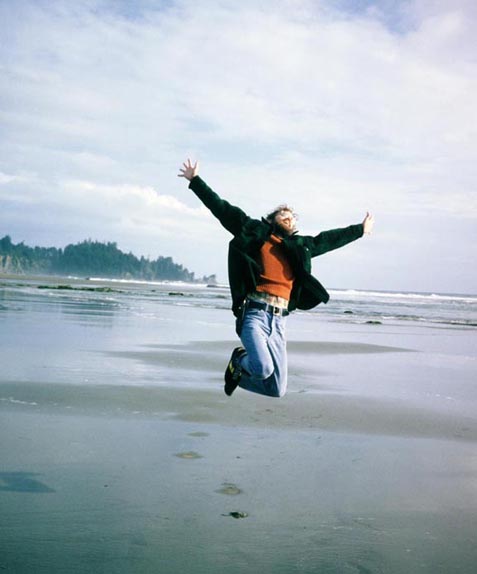
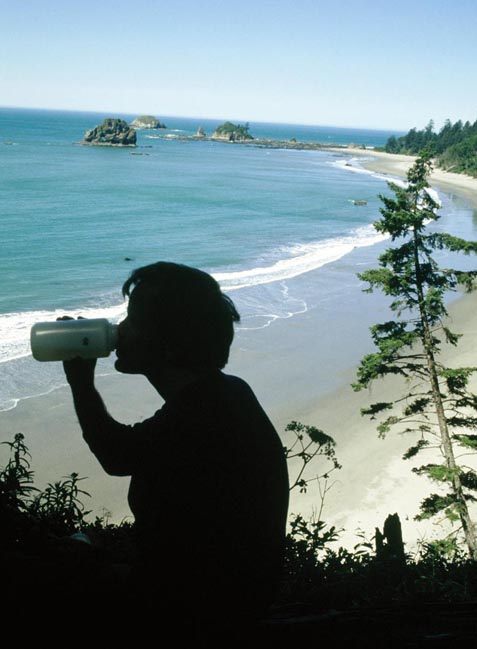
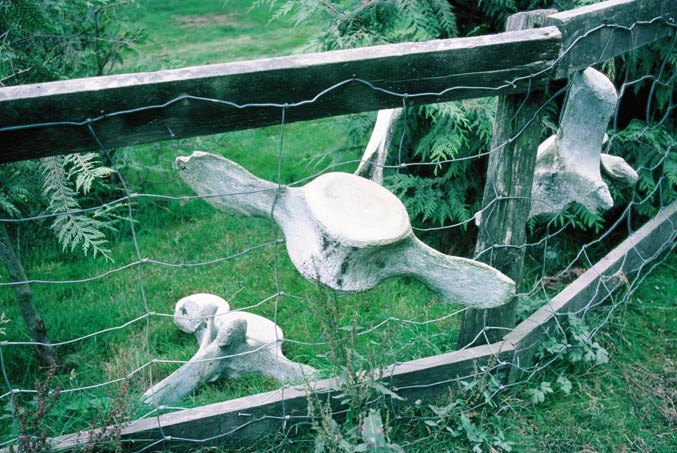
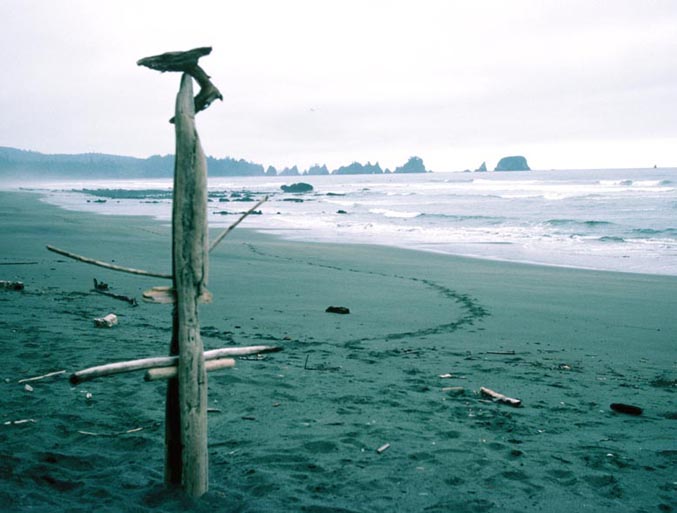
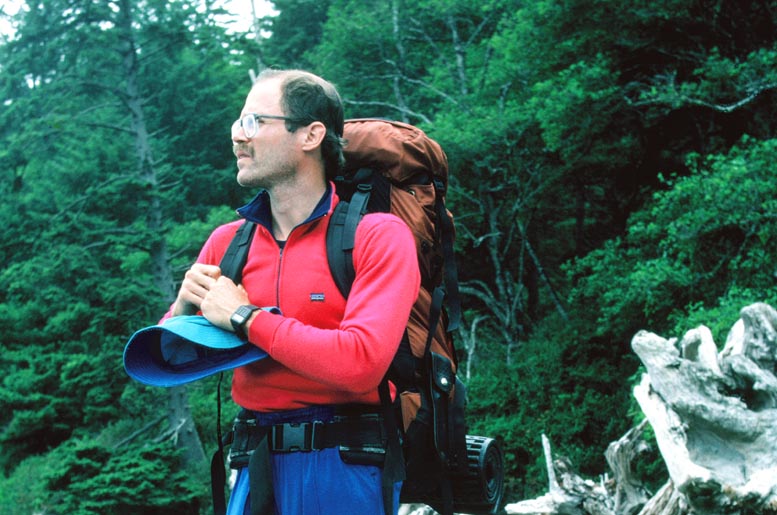
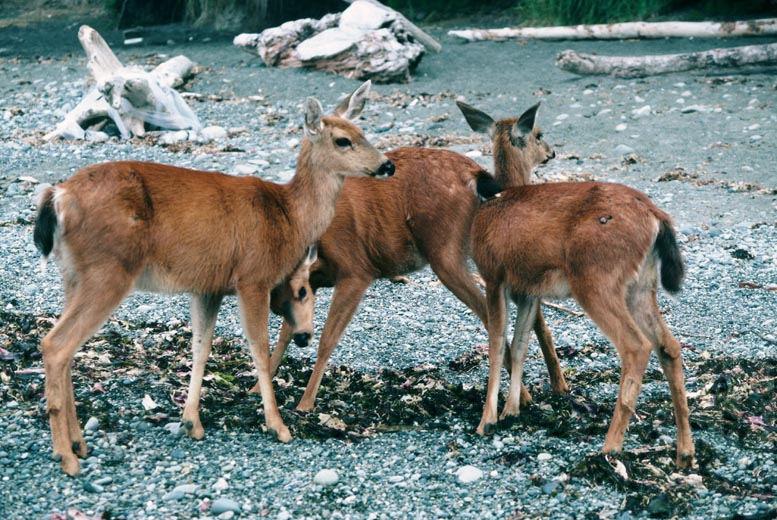
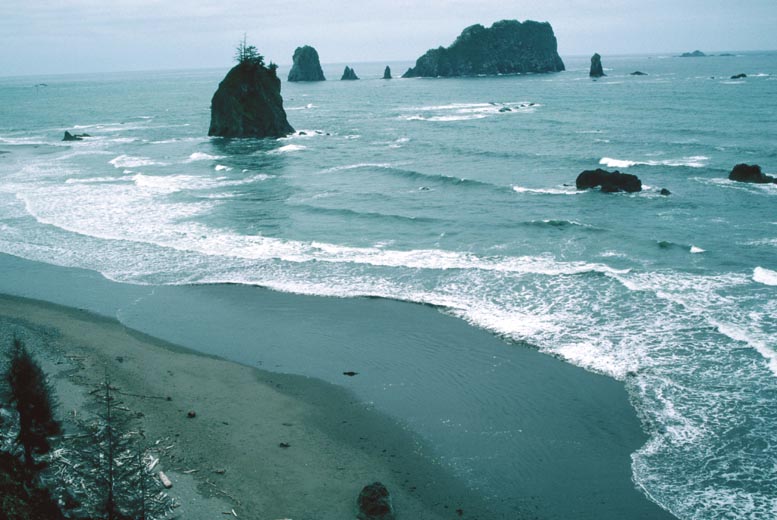
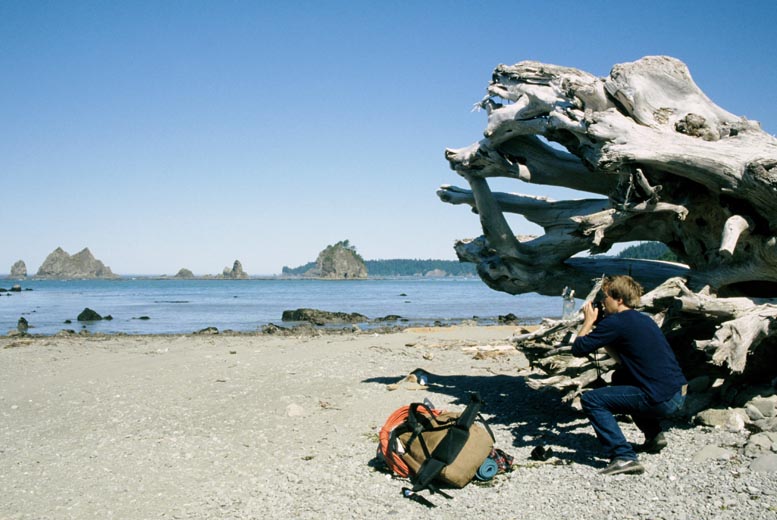
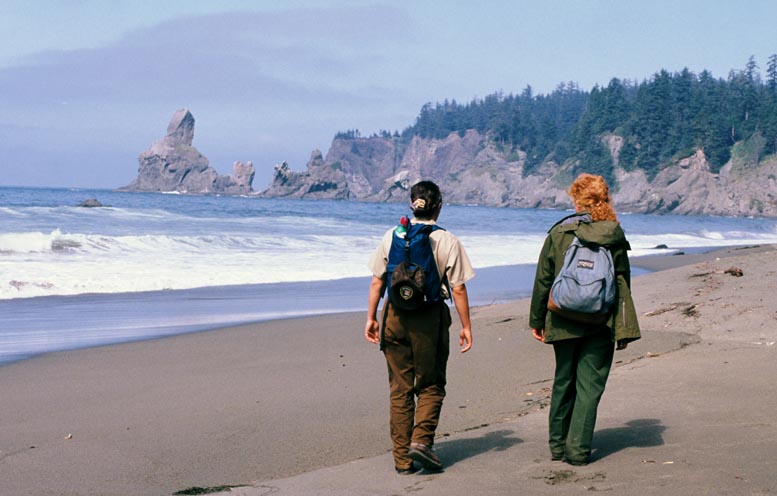
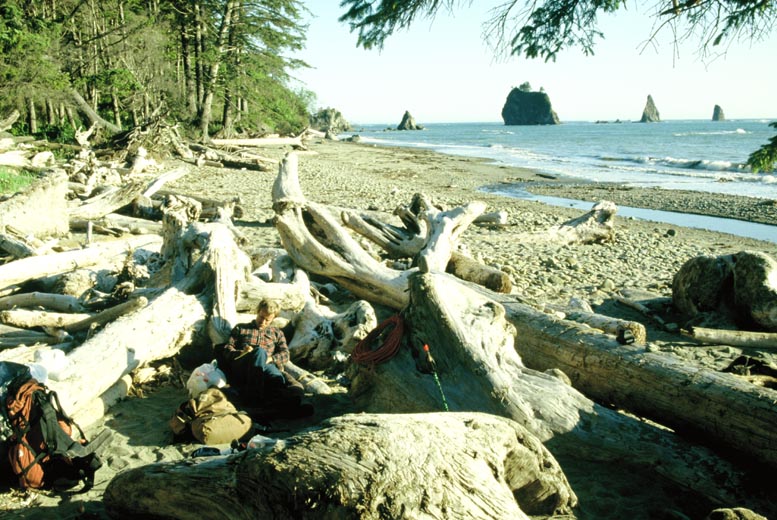
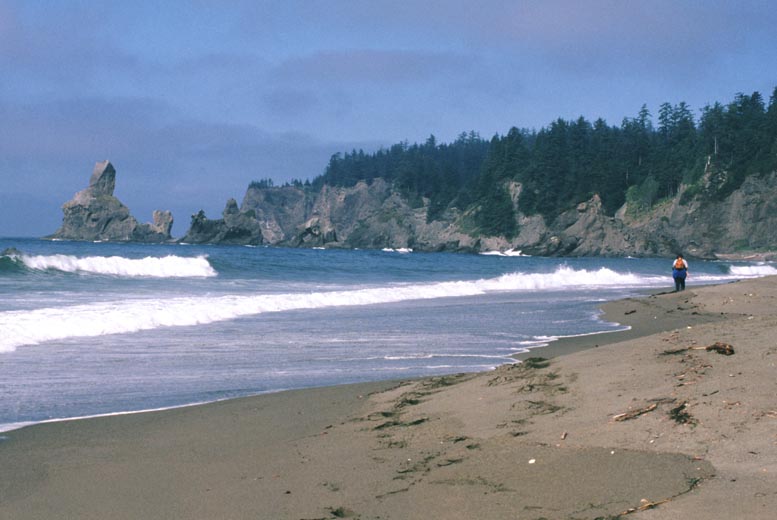
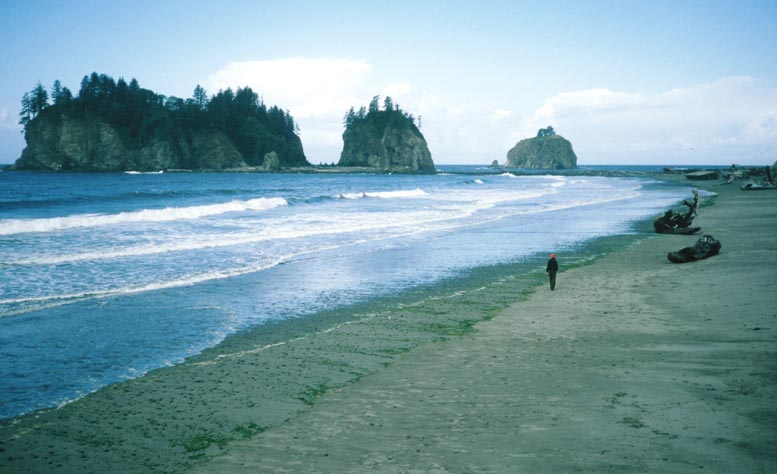
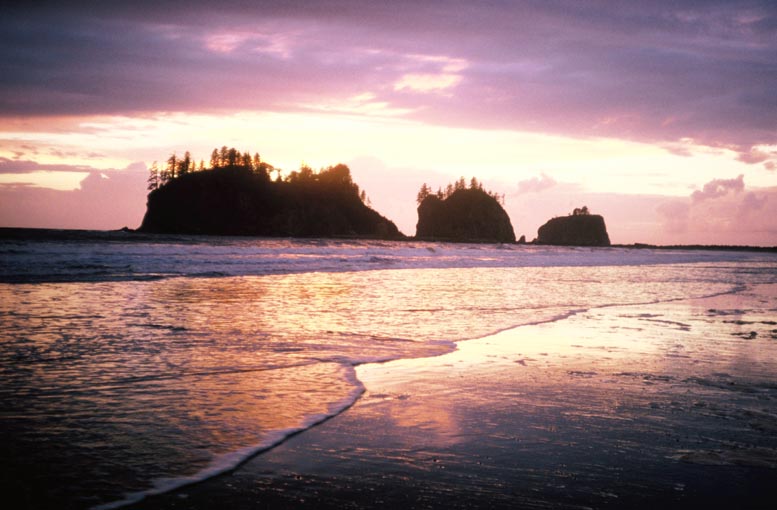
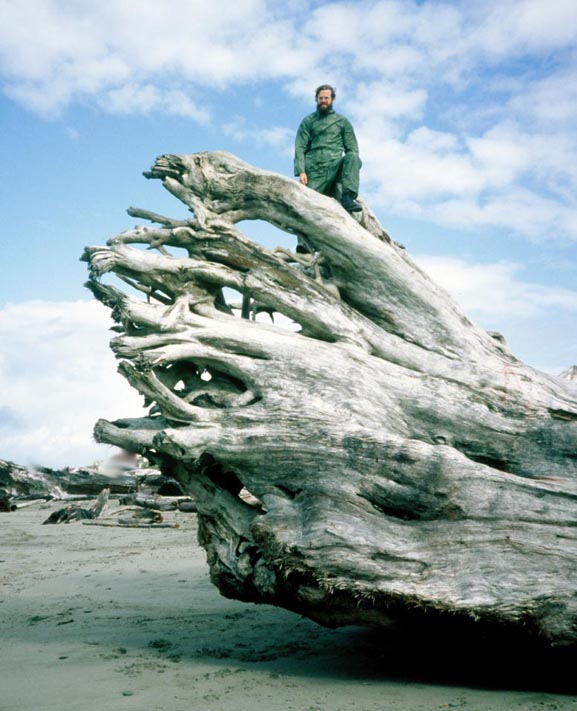
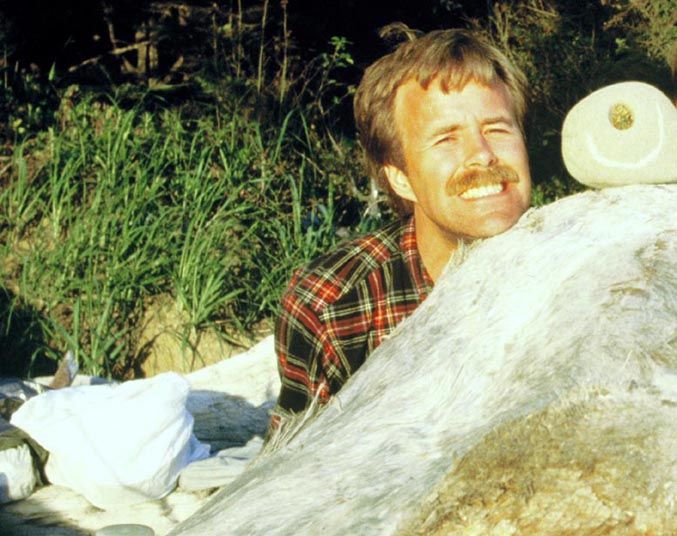
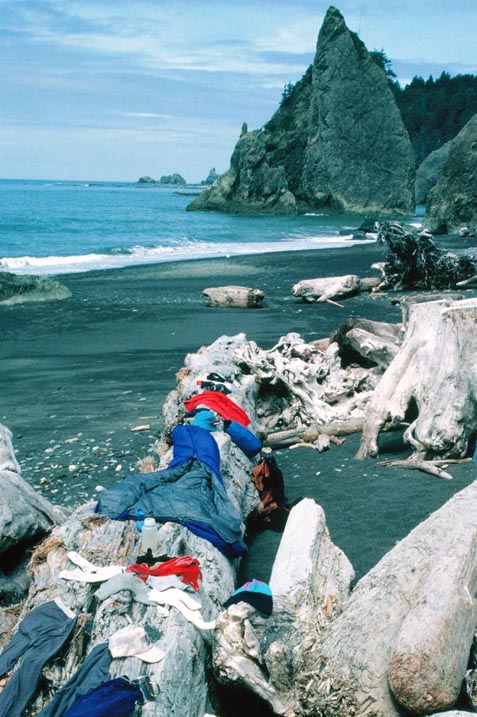
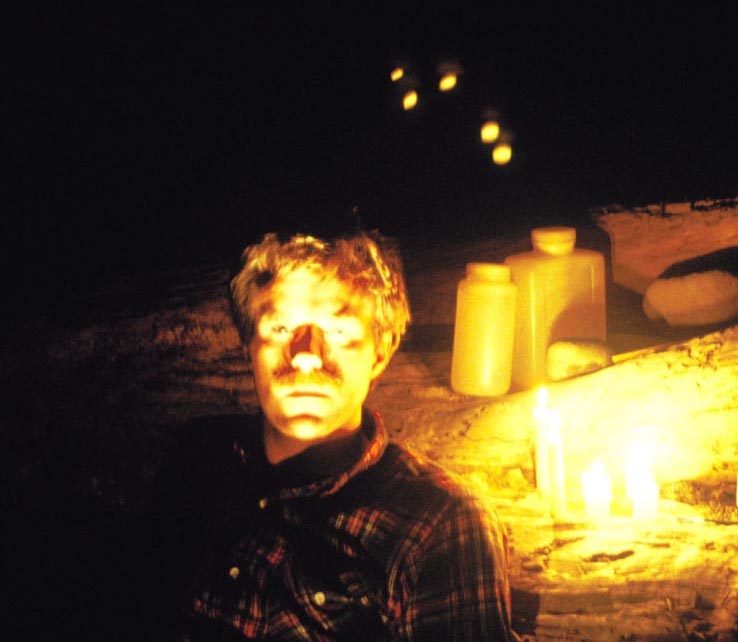
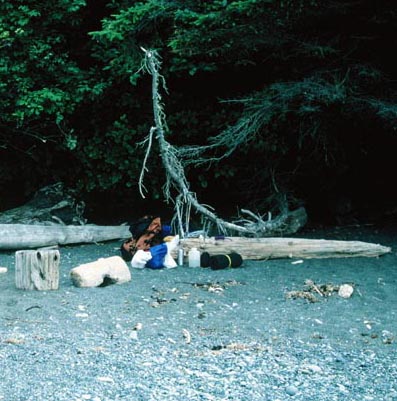
 RSS Feed
RSS Feed